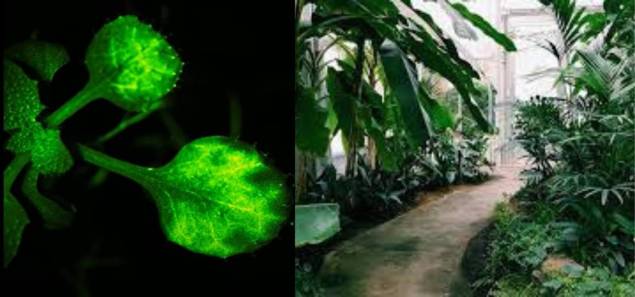Scientists from Japan have successfully filmed plants talking to each other and warning others about possible risks in real time. This is a big step forward in an observation that was first made in the early 1980s.
What they saw was: The research team, led by molecular biologist Masatsugu Toyota from Japan’s Saitama University, published their findings in the journal Nature Communications in October 2023. They were able to show that healthy plants can send defence signals to nearby plants by sensing volatile organic compounds (VOCs) released by other plants in response to damage or insect attacks.
How the study was done: A Ph.D. student at the university named Yuri Aratani and a postdoctoral researcher named Takuya Uemura put an air pump on a container with leaves and caterpillars and another chamber with Arabidopsis thaliana, a common weed from the mustard family. Arabidopsis plants were genetically changed so that their cells glow green when they sense calcium ions, which are stress signals. Then, using a fluorescence microscope, the team watched the signs that the healthy plants sent out after getting VOCs from the damaged leaves.
Why it’s important: Scientists have been talking about plant communication ever since it was first seen in a study in 1983.
Read More: How to Keep Your Plants Alive This Winter
Toyota said of their latest study, “We have finally unveiled the intricate story of when, where, and how plants respond to airborne “warning messages” from their adjacent plants that are in danger.” “Ethereal communication networks like this one, which we can’t see, are very important for keeping nearby plants safe from immediate threats.”
What do you say about this story? Visit Parhlo World For more.


